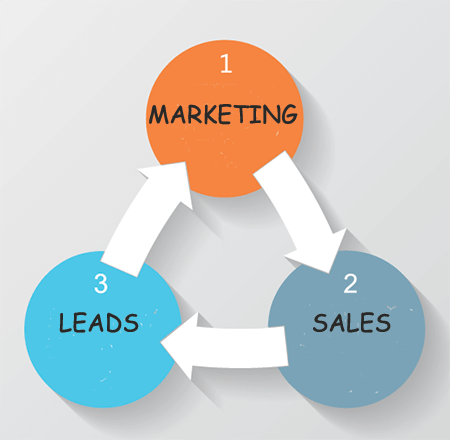Align Your Marketing and Sales Efforts to Increase Lead Generation
The art or science, if you prefer, of sales has come a long way from the days of Henry Ford’s declaration that customers could have any color of automobile they wanted as long as it was black. That was the product era, when affordable mass-produced goods were scarce, and the public for the most part bought whatever was marketed to them.
The Internet revolution has helped propel the consumer into the driver’s seat; today everybody is no more than a click away from a wealth of information about any conceivable product or service. This technology has also brought about significant changes in the way goods are sold; the marketing and sales functions have evolved from a “how can we increase sales” mentality to a “what pressing customer problem can we help solve” philosophy.
The implication for marketers is clear: the closer that Marketing and Sales can be integrated into the lead generation function, the more effective and profitable the resulting consumer-centered company will be.
How Marketing Can Help Sales Convert More Leads
A review of the buying process is necessary to understand how marketing and sales tie-in to lead generation. Every buying process is composed of three critical steps:
- The first step is the awareness stage, where the prospect is in the early stage of identifying a particular need or problem.
- In the consideration stage, the prospect has concluded that a definite problem exists, and is gathering information and identifying options that might help solve the problem.
- Prospects in the decision stage have considered their options and are ready to decide on a solution.
Armed with this information, marketing can better identify what stage a particular prospect is in and guide him or her to the appropriate marketing funnel.

- Marketing’s job is to provide the right information at the right stage, and to advise sales as to the prospect’s needs and objections so that a more targeted sales presentation can be made at the appropriate time.
- Marketing helps Sales assess and categorize the leads that are generated, separating leads that are ready to be approached by Sales from those that require more information.
How Sales can Help Marketing Generate Better Converting Leads
If the sole purpose of generating leads is to be able to eventually convert them to sales, then it stands to reason that the ultimate measure of an effective lead generation campaign is in the number of sales actually closed.
- Sales can assist marketing in its lead generating efforts by providing valuable feedback for each category of inbound leads, including important metrics such as conversion rates, gross and net revenue figures, and customer retention. This information allows marketing to refine its efforts and to focus on those lead categories that offer the most potential.
- Objections that arise during the course of the sales process is valuable information that should be routed to marketing. Common recurring objections might indicate a need to revise marketing materials to address these potential stumbling blocks to a successful sales closing.
- Leads that have not converted are not necessarily dead – they may simply require more nurturing. Sales should route these leads back to marketing. Once a prospect has indicated an interest in your product or service, continue your engagement until the time is right.










